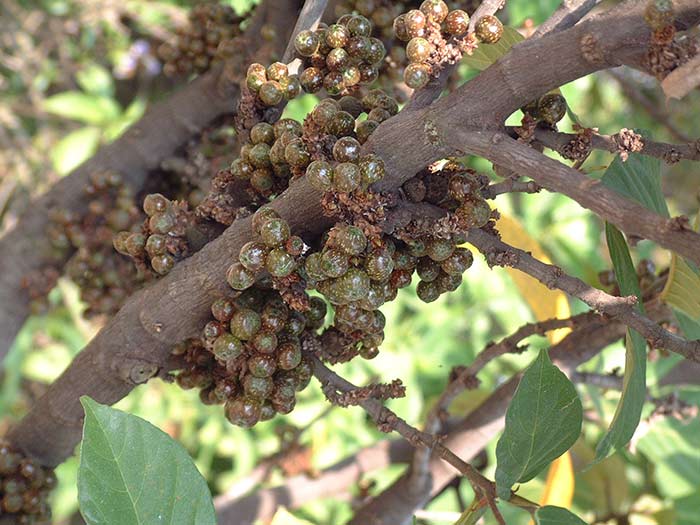Ficus fistulosa
The milk tree is an evergreen medium-sized tree that prefers moist forest floors or the sides of streams and valleys. Its most distinctive feature is the way its synconia grow. Unlike the fruits of most plants, which grow at the tips of branches, the synconia of the milk tree are “cauliflory”, densely clustered on the main trunk or thicker branches, tightly adhering to the trunk. Their appearance resembles a cluster of nursing sows' teats, earning them the vivid colloquial name “sow's milk” in Taiwanese folklore. These spherical or oval-shaped synconia contain tiny flowers inside. When mature, they turn from green to orange-red or reddish-brown, attracting birds and other small mammals to feed on them, making them an important food source for wildlife.
The color changes of the leaves of the milk tree are particularly striking. Newly emerged young leaves often feature an enchanting reddish hue, which gradually deepens into a rich dark green over time. Before falling, the leaves transform into a vibrant yellow, showcasing the tree's rich color variations throughout its life cycle, making it an excellent ornamental tree species for landscaping. Its well-developed root system helps stabilize soil and contributes to soil conservation efforts. Its bark is rich in latex and has historically been used as an adhesive.
The milk tree is distributed in the tropical and subtropical regions of South Asia and Southeast Asia, spanning from the eastern Himalayas to the Pacific Islands. They can be found throughout Taiwan's low-altitude broadleaved forests and plains, particularly in the forest understory of moist environments or along stream banks. It was originally planted in the Northern Lowland Area and near waterways of the Monsoon Rain Forest Area of the Botanical Garden, but is now also found along moist pond edges and roadside areas throughout the garden, as animals disperse the seeds after consuming the fruits.
